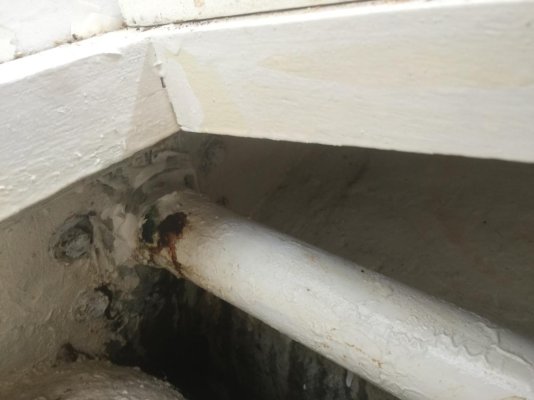Hawkeye
Veteran Member
Just noticed seepage under the packing gland hardware, maybe called the shaft log? It is wet under the bronze piece that the packing gland collar tightens into. How is this piece attached to the hull and is it common that after 32 years I should expect water intrusion at that point? (This area behind the other engine is dry.) What kind of fix is required for this problem, average cost, specialty yard required, etc? Any help much appreciated.
Ted
Ted


